|
By cos - 2 Years Ago
|
|
Hello Members In process of rebuilding a 1956 Lincoln carb for S/C engine. Have a kit from Daytona, it did not come with power valve. Looking for advice for checking to see if is tight. I understand how they work but concerned if valve leaks (in high vacuum) seems like engine would run to rich. May be buying trouble but concerned. Thanks
|
|
By 55blacktie - 2 Years Ago
|
|
Contact Sal Cicala.
|
|
By Ted - 2 Years Ago
|
By design, the power valve is in an open position when the engine is not running. Once the engine is started, engine vacuum pulls the actuating stem ‘up’ and allows the power valve to close.
The power valve itself is brass and simply screws into the lower part of the bowl with a gasket. This part does not come in a carburetor kit. There is a number stamped on the power valve indicating the size of the holes in the power valve so that’s another tuning option on these carburetors. The actuating part of the power valve is a spring-loaded rubber diaphragm with a long stem that attaches to the fuel bowl cover with the two secondary jets and a screw. It's this part that is supplied in a carburetor kit. I like to put some white grease on the rubber portion of the diaphragm before attaching it to the cover. To facilitate a better seal, I will lightly depress the plunger while tightening the jets and single screw so that the rubber is flattened out during the tightening process.
To check that the power valve actuator will actually work as designed, do the following. With the bowl cover on its back, fully depress the stem of the actuator and then put a finger over the exposed hole that is at the front and center gasket edge of the cover. When releasing the stem, the stem should not move outwards more than 1/8”. Upon releasing the finger from the hole, the stem should fully extend back to its full length. In the event, the actuator will not hold a vacuum, then check that the bronze bushing in the center hole of the bowl cover that is used for the air cleaner stud does not have an air leak. The power valve vacuum channel is behind that brass bushing and if the bushing is not tight within that hole, the power valve will not work. Putting fingers on both side of the carb stud hole while also sealing the exposed hole at the front of the cover with another finger while performing the above test will let you know if there is a problem or not with the bushing within the carb stud hole.
|
|
By cos - 2 Years Ago
|
|
Thanks Ted Will make sure plunger will hold a vacuum like you advised. The power valve itself, If it leaks with plunger retracted (under vacuum) will this cause a problem? I have put a vacuum source on thread end of power valve, it will not hold. Vacuum probably pulling stem open. I will try somehow to put pressure on plunger end of valve to check for leakage. Should valve have zero bypass? Maybe buying trouble but want to check everything I can.
|
|
By Ted - 2 Years Ago
|
The fuel entry point for the power enrichment system is at the stem at the top of the power valve. Under the gasket and just below the tapered portion of the power valve is a small hole. The size of that hole corresponds to the number stamped on the top of the valve and the size of that hole is what meters the fuel for power enrichment purposes.
The small ‘sized’ hole just above the threads will be a vacuum leak if attempting to pull a vacuum at the lower end of the threads. If you can put the test hose over the whole of the threads and butt the hose against the lower tapered portion of the valve, then you can potentially test the valve for sealing. Any significant amount of vacuum that exceeds the valves’ internal spring rate can still open the valve when testing in this manner so you would only be looking at the very low vacuum numbers when testing in this manner.
As long as the spring is working within the valve, those valves typically do not give much trouble. Valves from carburetors that have been allowed to corrode heavily are problematic in regard to internal sealing.
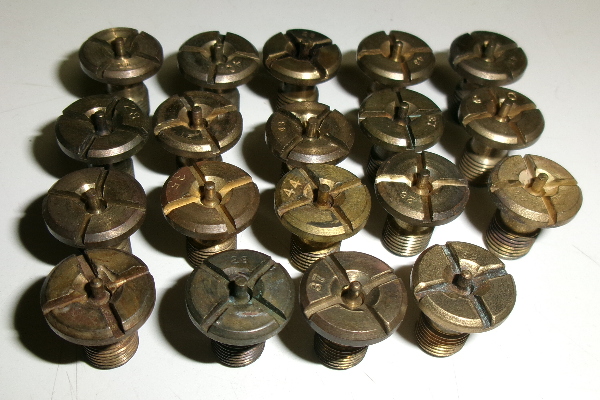
|
|
By cos - 2 Years Ago
|
|
Thanks again Ted. Will test in one way or another, with vacuum or pressure. In looking at the pic of valves you have I noticed one with a 44 port, what would that valve been used in, never cone across one that large. I believe original EDB carb used #37 valves but was advised to bore a little bigger.
|
|
By cos - 2 Years Ago
|
|
Hello Found a chunk of hose with right ID dia. to fit over large end of power valve. By just blowing on hose, valve under water, one was tight other bubbling, leaking.
|
|
By Ted - 2 Years Ago
|
|
cos (9/24/2024)
,,,, In looking at the pic of valves you have I noticed one with a 44 port, what would that valve been used in, never cone across one that large. I believe original EDB carb used #37 valves but was advised to bore a little bigger.
Thanks for sharing how you performed the test. That was a simple and effective method for testing the power valve.
That ‘44’ power valve likely came from a ’56 Lincoln 368 carb. The 43’s came in some of the 1955 Ford/Merc/T-Bird 292 carbs. I have seen those power valves in the 50’s range on the 302/332 LYB truck engines. The ’55 Teapots seem to be all over the map when it comes to power valve sizing.
|
|
By HazardTBird - 2 Years Ago
|
cos (9/24/2024)
Hello Found a chunk of hose with right ID dia. to fit over large end of power valve. By just blowing on hose, valve under water, one was tight other bubbling, leaking.
COS
That was ingenious!! I will try the same test.
Power valves available anywhere if found to be leaking?
|
|
By cos - 2 Years Ago
|
|
I don't know answer to that question. I have several teapots that I have robbed parts from. Ted might know.
|
|
By KULTULZ - 2 Years Ago
|
|
https://www.carburetor-parts.com/holley-4000-parts
|
|
By HazardTBird - 2 Years Ago
|
Kultulz
I didn't see any power valves on Mike's Carbs site; am I missing it? All kits have the economizer to engage the power valve, spark valve and inlet needle and seat.
|
|
By KULTULZ - 2 Years Ago
|
Hold On.
I am having a senior moment ... 
OK, I am much netter now... A little Jack and Coke brought me back ...
Is this what you are after - https://www.carburetor-parts.com/holley-enrichment-diaphragm-70-45
There are several calibrations so he will most likely need the CARB ID or if you give me the CARB ID, I can post a PARTS LIST so you can decide what calibration you need.
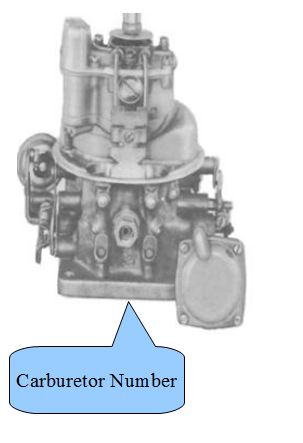
|
|
By KULTULZ - 2 Years Ago
|
Did the above help any?
|
|
By HazardTBird - 2 Years Ago
|
Kultulz:
Glad you recovered, I'll be having a recovery in about 3 hrs. If you look at Ted's posts in this thread he has a picture of maybe twenty power valves, a bunch of different drill sizes, that's what I was asking if they are available anywhere.
|
|
By KULTULZ - 2 Years Ago
|
Nah, what happened is I mis-read your post and for some reason had accelerator pump in my mind (don't ask).
Anyway, yes they are available NOS usually off EvilBay.
The BASIC PART NUMBER is 9594 and is called (by FORD) - JET (POWER).
There are different sizes of course. Are you re-calibrating the 1956 LINC H4000 for a 1957 FORD S/C APPLICATION?
Let me know if you need a special size and I will search through the MPC for your wanted size. They don't give a list of sizes, it is by application.
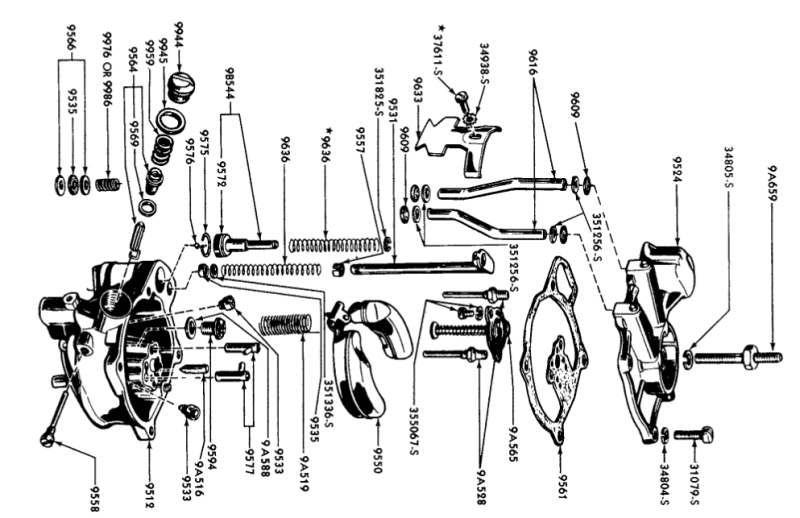
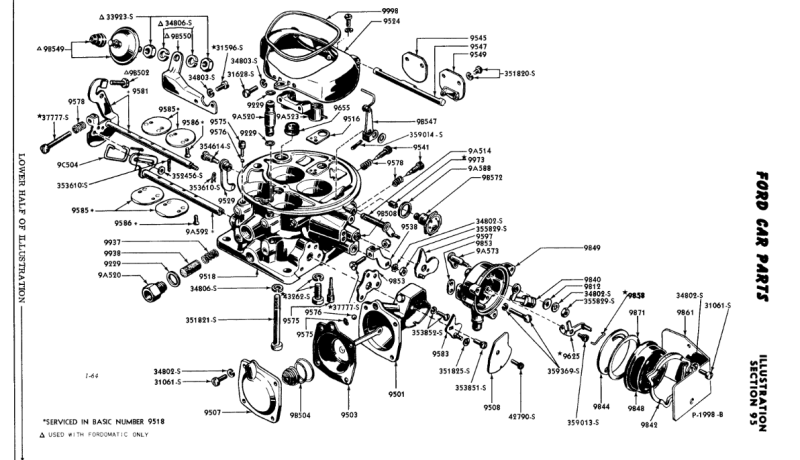
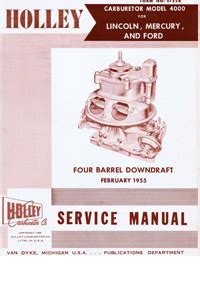
|
|
By RossL - 2 Years Ago
|
Ted (9/25/2024)
cos (9/24/2024)
,,,, In looking at the pic of valves you have I noticed one with a 44 port, what would that valve been used in, never cone across one that large. I believe original EDB carb used #37 valves but was advised to bore a little bigger. Thanks for sharing how you performed the test. That was a simple and effective method for testing the power valve. That ‘44’ power valve likely came from a ’56 Lincoln 368 carb. The 43’s came in some of the 1955 Ford/Merc/T-Bird 292 carbs. I have seen those power valves in the 50’s range on the 302/332 LYB truck engines. The ’55 Teapots seem to be all over the map when it comes to power valve sizing.
The power valve in my 55 TBird (4 barrel 292, automatic) is marked 21, do you think this is too small and causing my hesitation (when I floor the car from a dead stop). I just ordered a 43 (accelerator pump looks OK)
|
|
By cos - 2 Years Ago
|
|
Hello Could or would you share where you found new power valves?
|
|
By RossL - 2 Years Ago
|
cos (10/8/2024)
Hello Could or would you share where you found new power valves?
Ebay search for Holley 9594
|
|
By Ted - 2 Years Ago
|
Here’s a list of Holley 4000 (Teapot) carbs and their original PV numbers. The Holley List number is used and not the Ford part number. The application and engine size is shown where applicable.
Carb # PV# Application
R-1040A 21 1955 Merc 292
R-1074A 43 1955 Ford & Merc 292
R-1074-1A 43 1955 Ford & Merc 292
R-1074-2A 43 1955 Ford & Merc 292
R-1075A 40 1955 Ford & Merc 292
R-1075-1A 40 1955 Ford & Merc 292
R-1075-2A 40 1955 Ford & Merc 292
R-1076A 43 1955 Lincoln
R-1076-1A 43 1955 Lincoln
R-1076-2A 43 1955 Lincoln
R-1077A 40 1955 Thunderbird
R-1077-1A 40 1955 Thunderbird
R-1077-2A 40 1955 Thunderbird
R-1078A 43 1955 Thunderbird
R-1078-1A 43 1955 Thunderbird
R-1078-2A 43 1955 Thunderbird
R-1094-1A 44 1956 Linc & Cont
R-1094-2A 37 1956 Linc & Cont
R-1094-3A 37 1956 Linc & Cont
R-1094-4A 37 1956 Linc & Cont
R-1161A 28 1956 Ford & Merc 312
R-1161-1A 28 1956 Ford & Merc 312
R-1161-2A 28 1956 Ford & Merc 312
R-1162A 28 1956 Ford & Merc 292
R-1162-1A 28 1956 Ford & Merc 292
R-1162-2A 28 1956 Ford & Merc 292
R-1163A 28 1956 Thunderbird 292
R-1163-1A 28 1956 Thunderbird 292
R-1163-2A 28 1956 Thunderbird 292
R-1164A 28 1956 Thunderbird 312
R-1164-1A 28 1956 Thunderbird 312
R-1164-2A 28 1956 Thunderbird 312
R-1268A 28 1956 Ford T.B. HiPerf, 2-4 Bbl Inst.
R-1434A 32 1957 Ford 2-4 Bbl. 312
R-1437A 32 1957 Ford 2-4 Bbl, 312
|